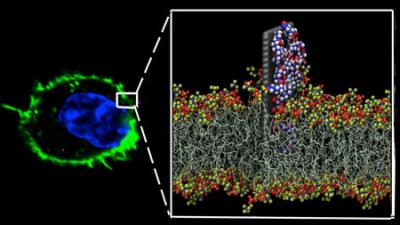IBM recently announced that its researchers have identified a new way to trigger the body's immune response by using polymer-coated graphene sheets.

In some medical treatments, it is crucial to target specific places in the body; To that end, scientists have developed techniques where drug molecules are attached directly to the surface of a nanomaterial, such as graphene sheets. Combining the nanomaterial and the drug molecules, these "nanotherapies" could help clinicians treat tumors, for example, by transporting the drugs directly to the tumors, where they can be released onto the cancer cells to help fight the disease.
Researchers had previously established that nanotherapies require the application of coating molecules, such as polyethylene glycol, to be biocompatible and avoid damaging surrounding cells. IBM's new research indicates that the polymer-coated graphene sheets can have an inadvertent, newly discovered secondary effect, which triggers the release of cytokine proteins. These act as "signal flares of the body" and attract the body's immune cells like helper T cells (which relay the signal forward) and killer T cells (which kill infected cells) to the location of the graphene sheets.
Simulations on IBM's Blue Gene super computer showed that the polymers attach the nanomaterials to cell surfaces, amplifying the initial signaling process. Research suggests these signals are broadcast within six hours of the nanodrugs being encountered.
"We've essentially uncovered a new way for clinicians to trigger the body's immune system to spring into action which is not an easy task," says a researcher at IBM Research. "This discovery could represent an incredible development in precision medicine. If these nanomaterials were targeted at, say, tumors or virus-infected cells, one could, in principal, stimulate the immune system to attack cancer and infections at their source."
In July 2014, IBM embarked on an ambitious project to find the next-generation chip technology to replace silicon, investing $3 billion over five years in this project and looking into graphene, carbon nanotubes, and more technologies.

